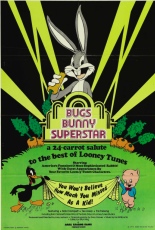
 It’s possible to be a movie lover and not like Greta Garbo or John Wayne or Humphrey Bogart, and still retain some credibility — but turn your nose up at Bugs Bunny and hell hath no depth too deep for you, you humorless poseur.
It’s possible to be a movie lover and not like Greta Garbo or John Wayne or Humphrey Bogart, and still retain some credibility — but turn your nose up at Bugs Bunny and hell hath no depth too deep for you, you humorless poseur.
Too harsh? Not harsh enough, doc.
Director Larry Jackson celebrated all things wascally with the documentary Bugs Bunny: Superstar. It contains live-action footage of the cartoonists and their staffs acting out stories before the animation began — Tex Avery was a hoot — but it’s mostly long on cartoons (a good thing) by including nine full-length examples from the 1940s, only six of which star Bugs. It’s short on documentary factoids about the history of the character and the gang who created and developed him in a creaky building called Termite Terrace on the Warner Bros. lot.
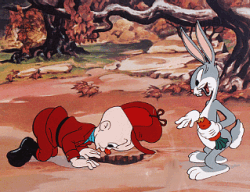 It’s this material, most of which is spoken by one of Bugs’ papas, Bob Clampett, that generated some hurt feelings when this film was released. Co-creators Avery and Friz Freleng are also interviewed, and while Clampett had complimentary things to say about Chuck Jones, Jones — who could nurse a grudge like Silas Marner could nurse a nickel — accused Clampett of being a credit hog. The thing is, when this picture was made, almost everyone from the days of classic animation was looking for credit for the work he’d done for hire in the 1930s-1950s, so a lot of exaggeration was going around.
It’s this material, most of which is spoken by one of Bugs’ papas, Bob Clampett, that generated some hurt feelings when this film was released. Co-creators Avery and Friz Freleng are also interviewed, and while Clampett had complimentary things to say about Chuck Jones, Jones — who could nurse a grudge like Silas Marner could nurse a nickel — accused Clampett of being a credit hog. The thing is, when this picture was made, almost everyone from the days of classic animation was looking for credit for the work he’d done for hire in the 1930s-1950s, so a lot of exaggeration was going around.
But you can ignore this backstory and enjoy the film for the comedy it contains. Especially fun are the undeniable classics The Wild Hare (1940), A Corny Concerto (1943), My Favorite Duck (1942) and Hair-Raising Hare (1946). The movie is narrated by an obviously-in-on-the-joke Orson Welles. —Doug Bentin

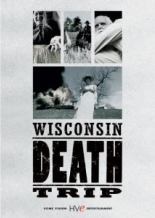
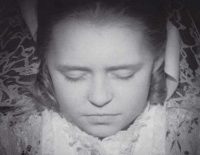 Many of the film’s visuals are derived from period photos taken by Charles Van Schaik, including a lot of children in their coffins, and the narration by Ian Holm comes entirely from newspaper articles and obituaries of the time. Many of the incidents are re-created using actors.
Many of the film’s visuals are derived from period photos taken by Charles Van Schaik, including a lot of children in their coffins, and the narration by Ian Holm comes entirely from newspaper articles and obituaries of the time. Many of the incidents are re-created using actors. 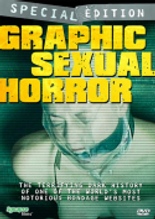
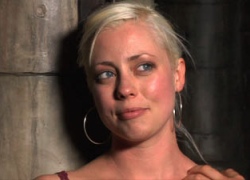 Which is a shame because there are several interesting points raised in the film. Especially intriguing is the question of whether or not any act can be considered truly consensual once money is added into the equation. In one interview, a model admits a scene she took part in could be considered rape, but she let it to continue and appeared in several more after it, because the money she earned allowed her to go on frivolous shopping sprees.
Which is a shame because there are several interesting points raised in the film. Especially intriguing is the question of whether or not any act can be considered truly consensual once money is added into the equation. In one interview, a model admits a scene she took part in could be considered rape, but she let it to continue and appeared in several more after it, because the money she earned allowed her to go on frivolous shopping sprees.